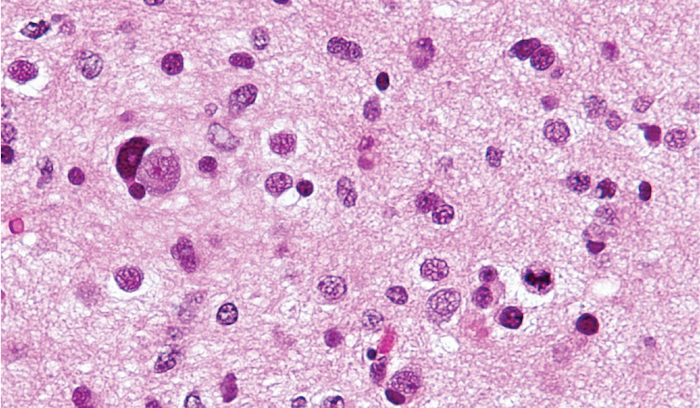High-Grade Glioma
HGG

Summary of
High-Grade Glioma
High-grade Gliomas (HGG) or astrocytomas in children nearly always result in a dismal prognosis. Although novel therapeutic approaches are currently in development, preclinical testing has been limited, due to a lack of pediatric-specific HGG preclinical models. These models are needed to help test the effectiveness of different drug types in the laboratory. Medical advances over the last 40 years have increased the survival rates for many types of childhood cancers. However, the prognosis for patients diagnosed with a Diffuse Intrinsic Pontine Glioma (DIPG) has not improved. These highly-aggressive brain tumors defy treatment and have a 98% mortality rate,typically within nine months of a diagnosis. Located in the area of the brainstem that controls a child’s breathing, blood pressure, heart rate, and other vital functions, DIPG tumors cannot be removed through surgery. WHO 2016 Classification Diffuse astrocytic and oligodendroglial tumor.
Available CBTN Biospecimens
participants with flash-frozen tissue available
participants with match blood
participants with match parental specimens
participants with cerebral spinal fluid
Available CBTN Pre-clinical Models
genomically characterized cell lines with data available
genomically characterized pdx with data available
How do I get access to the specimens?
To request any of the biospecimens, or pre-clinical model please fill out this form.
Request take approx. 3 months and will require review by the scientific committee and MTA.
Need help? Contact us at research@cbtn.org
Explore the data in these informatics portals
How do I get access to the data?
To access the data please follow these instructions. Need help? Contact us at research@cbtn.org
You can access processed data today here by simply logging in to PedcBioPortal
You can request raw data by completing this form. The review normally takes 1 week. Once approved you can access the raw data by creating cohorts of interest on the Kids First Data Resource Portal and performing analysis on the cloud in Cavatica
featured
Scientific Projects

Specimen
Ongoing
Project Hope: High-Grade Glioma-Omics in Pediatric and AYA
High grade gliomas can affect patients of all ages, and cross-age group analysis could lead to advancements in care for all populations. Using samples and data provided by the Children’s Brain Tumor Atlas, researchers supported by the NCI seek to improve outcomes for patients experiencing these tumors.
HGG

Adam Resnick

Specimen
Ongoing
Elucidating the Role of Driver Mutations in Pediatric High Grade Glioma
It is crucial that the mutational drivers of pediatric high grade gliomas (pHGGs) are better understood if new therapies are to be developed. Using samples from the Children’s Brain Tumor Network, researchers seek to identify drivers of pHGG progression.
HGG

Thomas De Raedt

Data
Planning
Precision Imaging of Pediatric High-grade Gliomas with Quantitative Diffusion Weighted Imaging and Texture Analysis to Identify Imaging Biomarkers That Predict Tumor Genetics and Patient Outcomes
The recently characterized molecular marker, histone H3 K27M, could prove important to the treatment of pediatric gliomas. Researchers will interrogate data from the Pediatric Brain Tumor Atlas in order to better understand this new class of malignant gliomas.
HGG, DIPG

Mariam Aboian

